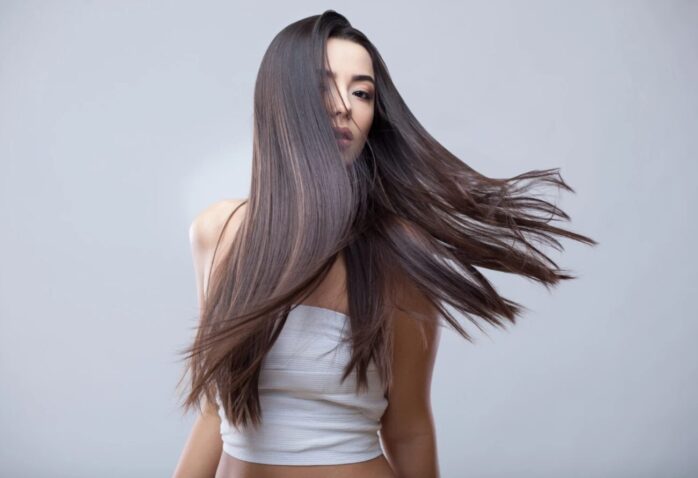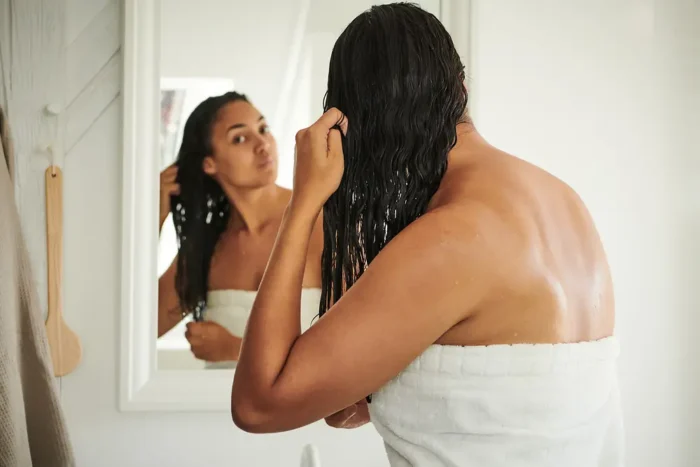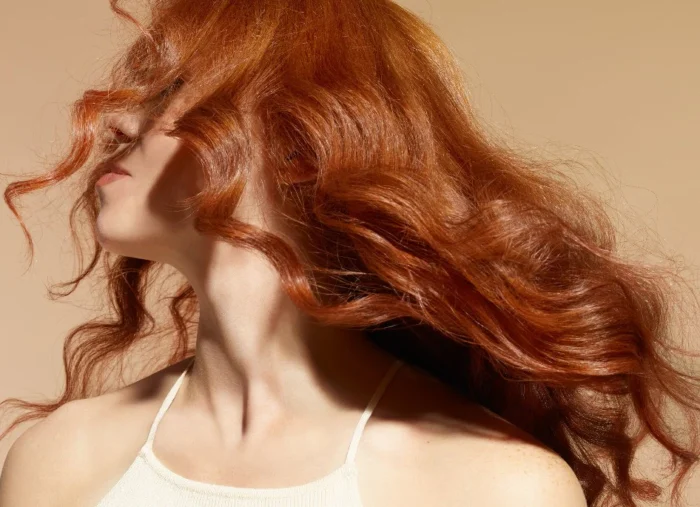
Your hair is not just a reflection of your identity but also a testament to your health and lifestyle. Like skin, hair responds to care and nourishment in unique ways. Not every product or practice works universally, primarily because our hair types differ. By understanding your specific hair-type and its needs, you can devise a tailored regimen that offers the right nourishment to keep your locks lustrous and healthy.

Relaxed Straight Hair
Relaxed straight hair is the result of a transformative journey where naturally curly or wavy locks are altered using specific chemical treatments. This method involves breaking down the structural elements that give it its natural curl to reveal a silky, straight finish. At a glance, this newly straightened hair may emanate an impression of strength and durability. However, looks can be deceiving.
Despite its smooth appearance, chemically treated hair can be quite vulnerable. The chemicals used during the relaxing process inherently alter the hair’s core structure. Consequently, while the outcome is aesthetically pleasing, the internal integrity of each strand can be compromised. This weakening can lead to a heightened risk of breakage, and an overall sense of dryness and brittleness.
To ensure that relaxed straight hair remains in optimal condition, it’s vital to adopt a dedicated care regimen. Here’s a deeper dive into some critical care strategies:
- Prioritize Moisturization: One of the foremost needs of relaxed hair is hydration. It’s essential to invest in high-quality shampoos and conditioners that are specifically formulated to hydrate. Additionally, to replenish lost moisture and improve elasticity, one should indulge in deep conditioning treatments every fortnight.
- Exercise Caution with Heat: While styling tools can enhance the look of relaxed hair, they can also be its downfall. Over-reliance on heat-based tools can intensify damage. If there’s a need to use such tools, it’s non-negotiable to use a quality heat protectant to shield the threads from excessive thermal exposure.
- Commit to Regular Trims: The ends of the hair are the most susceptible to splitting and breakage, especially when they are chemically treated. Regular trims, perhaps every 6-8 weeks, can help in eliminating potential split ends, promoting the overall health and vigor of the mane.
In conclusion, while relaxed straight hair offers a sleek, polished look, it demands intentional and consistent care. Embracing a tailored regimen ensures that it not only looks good but also feels healthy and resilient.

Curly Hair
- 1. Understanding Curly Hair: Curly locks may seem full of volume, but they often suffer from dryness. This is because the scalp’s natural oils struggle to navigate the twisty nature of curly strands, resulting in drier ends.
- 2. Hydration is Key: The secret to flourishing curls is moisture. Always opt for sulfate-free shampoos. It’s essential never to miss out on the conditioner, as it provides the necessary hydration.
- 3. Rethink Drying Methods: Towel-drying can be detrimental to curls. To reduce the risk of frizz and breakage, utilize a microfiber cloth or even an old t-shirt. This gentler method helps maintain the hair’s structure and health.
- 4. Embrace Curl Enhancers: Products specifically designed for curly hair, such as creams or gels, are vital. These curl enhancers not only define but also ensure your curls stay in place.
- In summary, understanding the unique needs of curly hair is paramount. From proper hydration to using specialized products, ensuring your curls get the best care will lead to healthier, more vibrant tresses.

Fine Hair
- Fine hair, characterized by its soft and silky texture, often faces the challenge of becoming limp and lifeless. The nature of this type means it can get oily faster than its coarser counterparts. To combat this and maintain its volume, it’s essential to strike a balance in its care routine.
- Volume-Boosting Products: When choosing products, go for those that emphasize volume and lightness. Avoid heavy conditioners as they can cause the strands to droop, making the hair appear even flatter.
- Frequency of Washing: Although daily hair washing isn’t suitable for every type, those with fine textures might find benefits in washing more often. This frequent cleansing can ward off the rapid accumulation of oils, ensuring it remains buoyant and vibrant.
- Opt for Layered Cuts: One surefire way to infuse life into fine hair is by getting the right haircut. A strategically layered cut can create the illusion of volume. It’s a worthwhile conversation to have with your hairstylist about adding layers to enhance your hair’s natural beauty.

Thick Hair
- Thick Hair Characteristics Thick hair is frequently admired for its lush and full appearance. The density of its strands makes it a coveted type. However, this very attribute, coupled with its weight and volume, can make it somewhat tricky to manage.
- Deep Conditioning for Vibrant Strands One of the most effective ways to care for thick hair is through deep conditioning. The robust nature means it can not only withstand, but often benefits from, more intense conditioning treatments. These treatments replenish the strands, providing it with much-needed nourishment and ensuring it remains healthy and resilient.
- Detangling Techniques for Thick Hair Tangles can be a common issue with thicker hair types. To address this, it’s crucial to detangle with care. The best approach involves using a wide-tooth comb. Start at the tips and gently work your way up. This method minimizes breakage and reduces the stress on the shaft.
- Styling Tips: Layer Length Matters When considering haircuts and styles for thick hair, it’s essential to make informed choices. Short layers can often result in added puffiness or a bulky appearance. To achieve a more balanced and flattering look, it’s advisable to opt for longer layers. These layers help distribute the hair’s weight, ensuring it maintains a harmonious shape and style.
- In conclusion, while thick hair is often a source of envy, it requires specific care to keep it looking its best. Deep conditioning, careful detangling, and thoughtful styling are key.

Color-Treated Hair
Coloring can take a toll on your mane’s health, often leaving it dry and prone to fading.
- Color-Safe Products: Always use shampoos and conditioners designed for color-treated mane. They help retain color vibrancy and prevent premature fading.
- Limit Sun Exposure: UV rays can fade mane color. Wear hats or use UV-protective tresses sprays when outdoors.
- Cold Water Rinses: Hot water can strip color. Use lukewarm or cold water to rinse.
Conclusion
Your mane deserves personalized care. Recognizing its unique needs and adapting your haircare regimen ensures your crowning glory remains radiant and robust. Embrace your hair-type, provide it with tailored nourishment, and watch it thrive.










